10 Iconic Floral Still Lifes You Need to Know
Flowers have long been a central theme in still-life painting. Each flower carries its own symbolism. For example, they can represent innocence,...
Errika Gerakiti 6 February 2025
In the middle of the North Atlantic lie 18 islands most people have never heard of. They are called Faroe, which loosely translates to sheep islands. A name that is not surprising when one learns that even today there are more sheep than people on these beautiful islands. The scenery has attracted painters and writers since the 19th century, who in return have taught and inspired local creatives. An exchange that started an artistic fire still burning today. So it is just about time you learned about 5 painters from Faroe Islands to be able to show off your knowledge of the early period of this island’s art at the holiday dinner table.
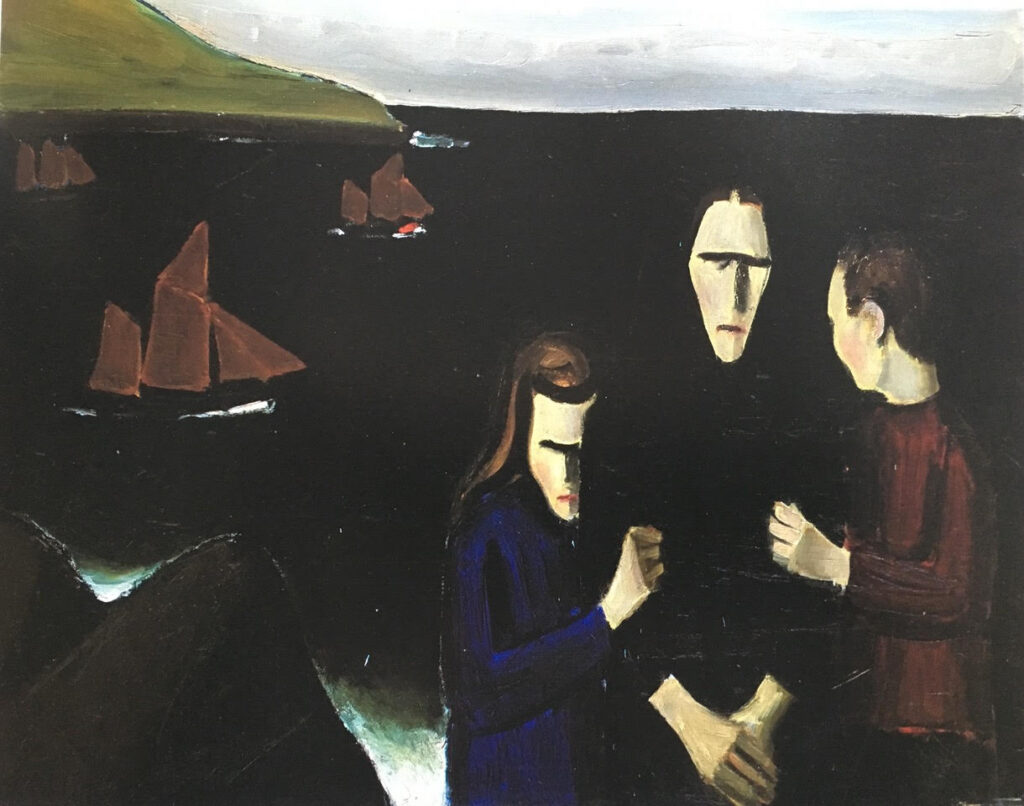
Sámal Joensen-Mikines, Faroese Smacks. Frontiers Magazine.
In 1906 on the island of Mykines, known today for its large puffin nesting grounds, the artist was born under the name Sámal Joensen. His life was filled with death and sorrow as tuberculosis raged. Early on he lost his father and two sisters to the disease. He himself was not blessed with strength and health, a fact that made it impossible for him to work at sea. Inspired by a Swedish painter that visited the island he wanted to become a painter himself. Together with the artists William Heinesen and Jákup Olsen, he organized the Faroes’ first art exhibition in Tórshavn. In 1928 he traveled to Copenhagen to study at the Academy of Fine Arts.
Keywords to describe Mikines’ style are: epic, expressive, and coloristic. He was inspired by Edvard Munch, Eugène Delacroix, and El Greco. His motifs however are traditionally Faroese, depicting the whale hunt, the chain dance, and fishing smacks among other things.
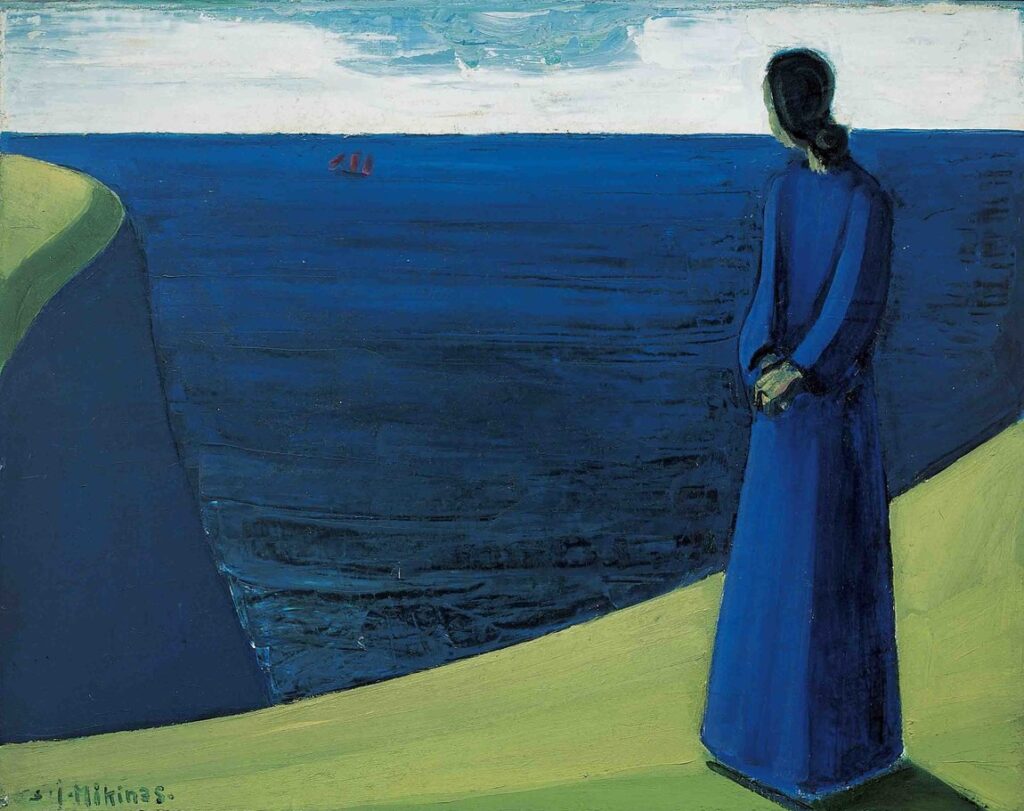
Sámal Joensen-Mikines, Ships Depart on a Spring Day, 1937-1938, Listasavn Føroya, Tórshavn, Faroe Islands.
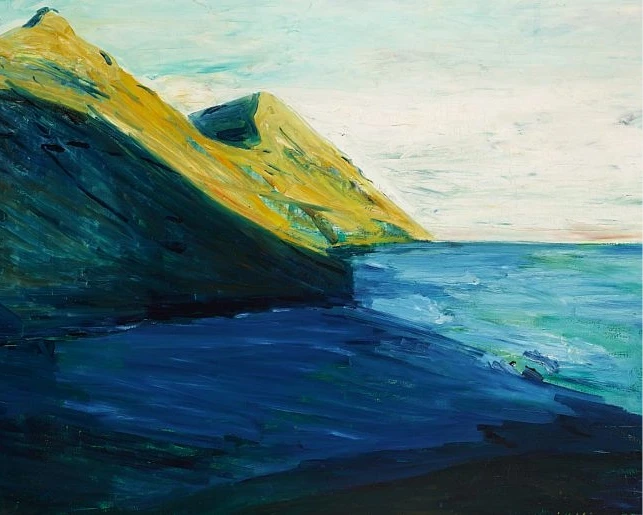
Jóannis Kristiansen, Norðragøta, The Faroe Islands, 1957. Mutual Art.
Born in 1918 in the village of Leirvík (east coast of Eysturoy), Jóannis Kristiansen left the islands at an early age and underwent various artistic training courses in Copenhagen. Finally, in 1944, he became a student of the director of the Academy of Arts, Karl Aksel Joergensen. This artist, known for his Post-Impressionist and Social Realist painting, had a profound influence on Kristiansen.
Jóannis Kristiansen’s artistic style is best described as that of a colorist. In his paintings, he caught the Nordic light in swift wide brush strokes, thereby catching the light’s cool qualities in a very unique way. He preferred to paint in the fresh air, under the open sky, or as the French Impressionists called it en plein air. In his diary, there are individual sentences that refer to the light, such as: “Everything has been in a sparkling light, which I am gradually catching.” His paintings are snapshots, sketchy yet intense. Kristiansen predominantly used bright colors and an open painting technique. The motifs range from Faroese landscapes and boats to depictions of everyday life and still lifes.
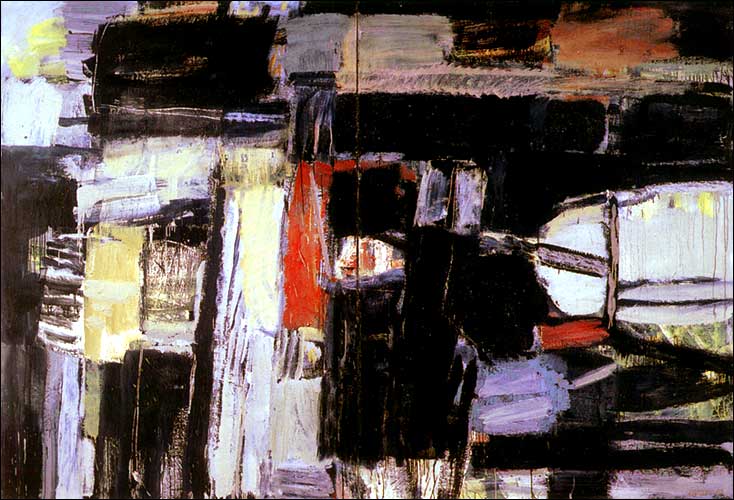
Ingálvur av Reyni, Trawlerdeck, 1999, Listasavn Føroya, Tórshavn, Faroe Islands.
Born in 1920, Ingálvur av Reyni is one of the most important Faroese painters of the 20th century. Famous for his abstractions and unconventional painting techniques, he soon left his Danish teacher’s colorist style behind. He exchanged the traditional ways with a more internationally oriented expression. Like his contemporaries, he was inspired by the landscape and culture of the islands. As a youngster, he worked as a fisherman. Therefore it is not surprising that shapes present on boats can be found even decades later in some of his paintings.
In his opinion, it was of utter importance that a painting be dominated by a main color on which the eye of the observer could rest. Ingálvur av Reyni’s artistic work sometimes gets put in a context with Paul Cézanne and Henri Matisse. Most impressive are av Reyni’s brushstrokes which are very dynamic and rhythmic.
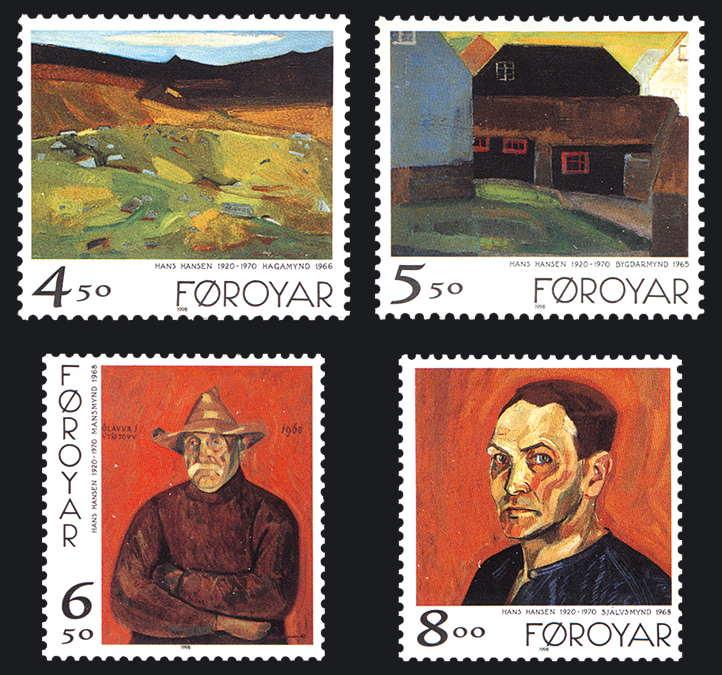
Hans Hansen’s paintings published as stamps by Faroe Islands Post, 1998. Posta Faroe Islands.
Hans Hansen, also known as Hans í Mikladali, belonged to the same generation of artists as Ingálvur av Reyni – still he is lesser known especially outside of the Faroe Islands. When he was a teenager he went out to sea, then he completed an apprenticeship as a house painter. An encounter with Johannes Kjarval‘s art in Iceland inspired him to go to Copenhagen to study drawing and painting as well as frescoing. Afterwards, he moved back to the islands. There he settled in Tórshavn, but the landscape and houses of his village of origin Mikladalur on Kalsoy stayed present in his work.
His landscapes and portraits are famous for their clear form, purity, and luminosity of color. They also have a personal lyrical tone. Thus looking out for Hans Hansen’s work when exploring painters from Faroe Islands is definitely a treat you shouldn’t miss.
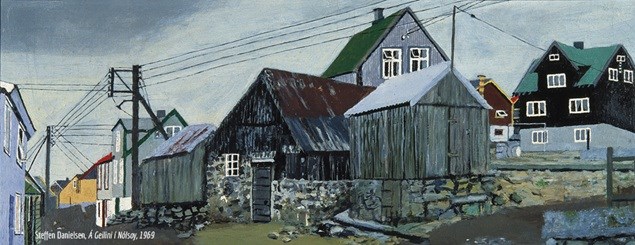
Steffan Danielsen, Á Geilini í Nólsoy, 1969. Nordatlantens Brygge.
Steffan Danielsen was, in contrast to his colleagues, an autodidact. He never studied art, instead he was self-taught. He loved painting his home-island Nólsoy in maverick ways. His perspectives of this island range from a boat on the sea, from an inaccessible rocky outcrop, or from his kitchen window. He portrayed his homestead in any light, in sun and rain, snow and fog. His work always kept a native and genuine expression favoring the color grey, meanwhile carefully playing with nature’s hues. Danielsen was only active for 24 years as a painter as he was in poor health.
Ingrid Falktoft Andersen, Færøerne – historie og samfund, kunst og kultur, 2012.
Michael Fuhr & Dagmar Warming, Moderne Kunst der Färöer Inseln. Modern Art from the Faroe Islands, 2007.
DailyArt Magazine needs your support. Every contribution, however big or small, is very valuable for our future. Thanks to it, we will be able to sustain and grow the Magazine. Thank you for your help!